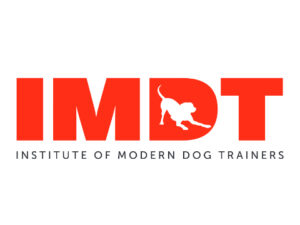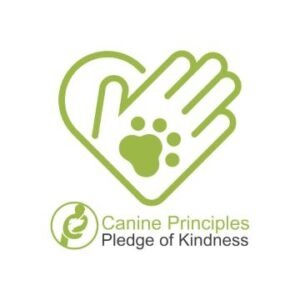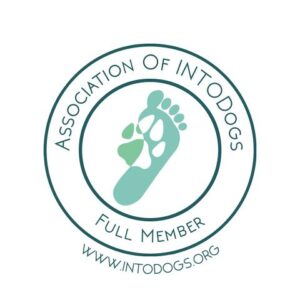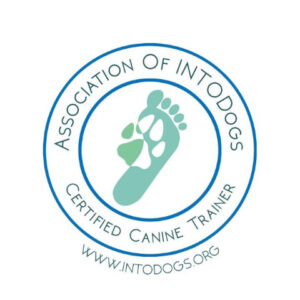Reactivity - why everything starts with US!
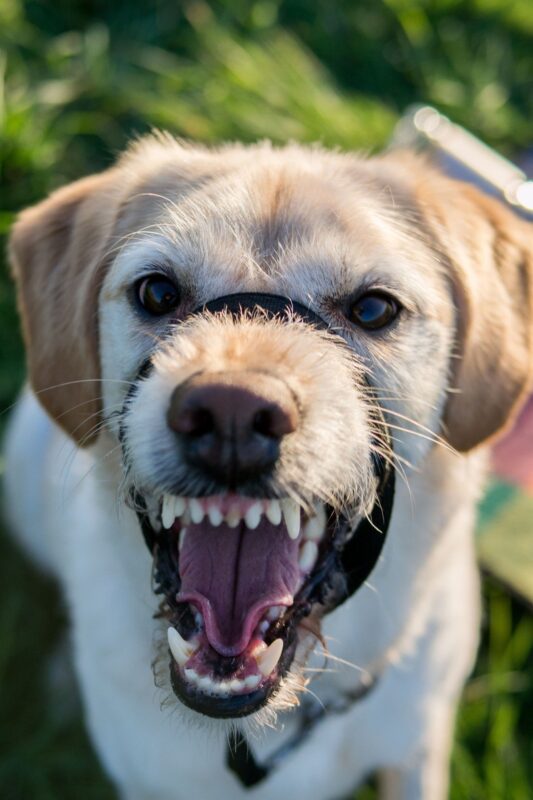
My dog is reactive. This is a sentence that training and behaviour coaches hear a LOT. But what does it mean? How do you know if your dog is reactive? We use a lot of jargon in dog training and behaviour, and the term is a bit of an unwanted 'label' that doesn't do the individual dog justice.
Opinion on what reactivity is changes from person to person. For some, the term conjures up the stereotypical image of the large, bull breed straining and lunging on a choke chain. For others, the image will be of the small 'yappy' dog that barks at all the big dogs. ALL of these dogs are reactive - in fact, every SINGLE dog is reactive when it comes down to it - they all react to something! We ALL do.
We know that the majority of canine reactivity stems from pain, fear or frustration - and most of it as a result of some sort of barrier. That barrier may be the lead the dog is tethered to, which stops him from running away from a perceived threat or it could be the window that stands between him and a dog walking past his home.
This blog article covers lead reactivity. While it is extremely common, it is a complex problem that is only aided by OUR observations and the preventative and proactive action we can take to help our dogs in situations they find scary.
Imagine you are a 10 week old puppy and your little brain is still developing - you are still learning what makes you happy and what scares you. You are walking happily next to your new guardian on a narrow canal towpath when, round a blind corner, appear a group of people on bicycles, making lots of swooshing noises and ringing bells. You get such a fright, you yelp and try to flee, but you can't go anywhere because you are tethered. While your guardian knows this tether is for your own safety, you certainly do not. While your guardian tries to soothe you on this occasion, they continue to take you along the same narrow path, where you regularly bump into bicycles and the situation replays and replays - you have no way out. Your fear grows just a little each time and you begin to lose trust in your guardian as they continue to take you to the same places.
Soon, you are stressed about your walk before you even leave the house. You KNOW there are scary things out there and there's nothing you can do about it, because you are on that tether. So your reactions become more extreme -- by now, you've realised that if you bark and lunge long enough, the scary thing will go away again. This is known as negative reinforcement - it works, so you do it again and get bigger and louder every time. By now, your guardian is embarrassed, frustrated and ashamed. Lead 'corrections' make you feel even worse because you feel that tension round your neck or body, depending if the lead is attached via collar or harness. This deepens your fear, because it is paired with pain or discomfort. Your muscles and bones ache. You just want it to stop.
It's easy to see how reactivity gets worse. Dogs don't have the power of logical thought the way we do. When we continue to put them in challenging situations, their behaviour will not eventually right itself - it will only get worse.
Helping a dog through reactivity covers a LOT of different variables. We need to be our dog's eyes and ears. I will normally ask clients to keep a diary of their dog's reactions because it helps me to build a picture. Narrow paths, blind corners and anything that blocks a clear view for the dog tend to add to their stress. Certain dogs can evoke stronger reactions. If the dog has had a 'run-in' with a certain breed of dog, they are more likely to be worried about that particular breed. Or colours - black dogs get a hard time because other dogs can't read their body language. Flat-faced breeds can be very misunderstood - they snuffle, their body language and play style can come across as confrontational (think of the French Bulldog crabbing - it can confuse!). Collies - bred to have a hard stare, in a world where a hard stare means 'come fight me'.
It's not only other dogs that cause reactivity though. More importantly, we need to be aware of what WE do. Think about the process you go through with your dog - are you on edge before you leave, as you dread bumping into anyone? Do you grab hold of that lead so tightly, the dog is practically stuck to your side? Do you shout at the dog in frustration - or do you shout at other owners in frustration to get their dogs on lead? Do you try to drag your dog in the other direction?
Also think of the 'tether'. Does your dog like getting his harness or collar and lead on? Does he pull anyway? To be able to manage reactivity - in other words, to help let the dog feel more secure - we must understand how our lead handling affects our dog's behaviour. If there's constant tension from our end of the lead, that tension flows right through and adds to the dog's experience.
Dogs don't just get over 'reactivity', we must put the tools in place to help them feel more secure. It can take a dog 72 hours to recover from an 'incident' - for the body to stop producing cortisol and calm from the fight/flight response. If exposed to triggers daily, their body doesn't have the opportunity to recover at all - this can leave them in a constant state of generalised anxiety, which is not always obvious unless you know how to identify it.
That means STOP taking them to the places they react the most. Go to wide open spaces, where you can control the environment for your dog - or a good, secure private play area/field. Be their eyes and ears - take appropriate preventative action when you see a potential trigger. If you can't take appropriate action, and a dog appears before you can do anything - stay as calm as possible and comfort your dog. Shouting at other owners is adding to your dog's fear and just leaves you frustrated and frazzled.
The most important things you can do to help your dog through reactivity, is to understand the emotions that drive the behaviour. Reactivity is NOT 'naughtiness', it's a cry for help and we owe it to them to listen. Training is not enough for reactivity - physical, manageable changes in routine are vital. To help the dog, we need to cement our relationship with them.
I would urge anyone with a reactive dog to pick up a copy of Janet Finlay's Your End of the Lead. A fantastic book full of lots of common sense advice that helps you build up your own resilience and management techniques that will help you to help your dog.
If you have a reactive dog, I'd love to help. My name is June Eaglesham and I'm the owner and founder of Wee Molly's Pals Pet Services, based in the little village of Winchburgh, just west of Edinburgh.
